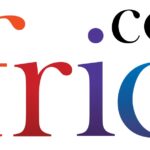The Future of Funding for Public Broadcasting in South Africa
By Leslie Adams, Sales Director at Reach Africa
The TV licence system in South Africa is facing significant challenges. With less than 20% of license holders actually paying, the costs of enforcing payments often outweigh the revenue collected. Many South Africans do not see the value in supporting a public broadcaster when they have access to a plethora of content from other sources.
Despite these challenges, the South African Broadcasting Corporation (SABC) remains a vital institution. It provides essential news, educational programs, and entertainment to millions of viewers who cannot afford premium services. Beyond content delivery, the SABC plays a crucial role in ensuring that important information reaches all South Africans, promoting local storytelling, and preserving cultural heritage. A sustainable and independent public broadcaster is essential for maintaining media diversity and upholding democracy, making its financial stability a national priority.
Recently, Solly Malatsi, South Africa’s Minister of Communications and Digital Technologies, proposed the idea of introducing a levy on streaming services as a potential funding solution for the SABC. He cited the inadequacies of the current TV licence model, including low compliance rates, high collection costs, and the impact of inflation.
However, implementing a levy on streaming services presents its own set of challenges and considerations.
Will Consumers Bear the Brunt of the Levy?
One of the primary concerns surrounding the proposed levy is the potential impact on consumers. While some countries have seen streaming services absorb such levies as part of their operational expenses, this is unlikely to happen in South Africa. Major streaming platforms like Netflix, Amazon, and Disney+ have already increased their subscription fees multiple times in recent years. If a levy is imposed, it is probable that consumers will end up shouldering the additional cost through higher subscription prices. With economic pressures already leading many South Africans to cut back on entertainment spending, further price hikes could drive more people towards illegal streaming alternatives or even prompt them to cancel paid services altogether.
Impact on the Local Film and TV Industry
Beyond supporting the SABC, there is a broader conversation to be had about how global streaming platforms contribute to the local content industry. While platforms like Netflix and Amazon have made substantial investments in South African productions, there are concerns about a potential decline in such investments. As streaming services shift their focus towards profitability, there is a risk of reduced budgets and lower content quality. If streaming platforms are required to pay a levy, there is a possibility that they may further scale back on local content investments. However, if structured appropriately, the levy could be used to fund local productions, create employment opportunities, and support the growth of the industry. Transparency in the allocation of these funds is crucial to ensure that South African creatives and content producers benefit from the levy.
Potential Response from Streaming Platforms
While it is unlikely that major streaming platforms would exit the South African market due to the levy, they may adjust their operations in response. This could involve reducing local content investments, restructuring pricing models, or passing on the levy costs to consumers. Given the existing high costs that streaming services face in South Africa, such as bandwidth expenses and data partnerships with telecom providers, the introduction of a new tax could further complicate the operating environment.
Designing a Fair and Sustainable Levy
To ensure the effectiveness of the levy, it must strike a balance between supporting the public broadcaster and the local content industry without making streaming services unaffordable for consumers. The funds generated should be reinvested in local film and TV productions rather than being diverted into government coffers. Additionally, the levy must be reasonable to prevent streaming platforms from passing on the costs to subscribers or reducing their local content investments. Different streaming models should be taken into account, and contributions from private broadcasters like MultiChoice and eMedia could be explored to distribute the funding responsibility more equitably.
In conclusion, the implementation of a levy on streaming services could have positive outcomes for the South African content ecosystem if managed thoughtfully. Engaging with all stakeholders – including streaming platforms, content creators, and consumers – is crucial to developing a fair and effective solution that benefits the entire industry.
About Reach Africa
Reach Africa specializes in connecting local and international content owners with diverse audiences across the continent. As a leader in Advertising Video on Demand (AVOD) and free ad-supported TV (FAST), Reach Africa offers innovative solutions for brands and content providers. Their expertise in the Connected TV (CTV) landscape enables brands to engage with unique audiences while empowering content owners to maximize their monetization opportunities.
For more information, please visit https://www.reachafrica.com








